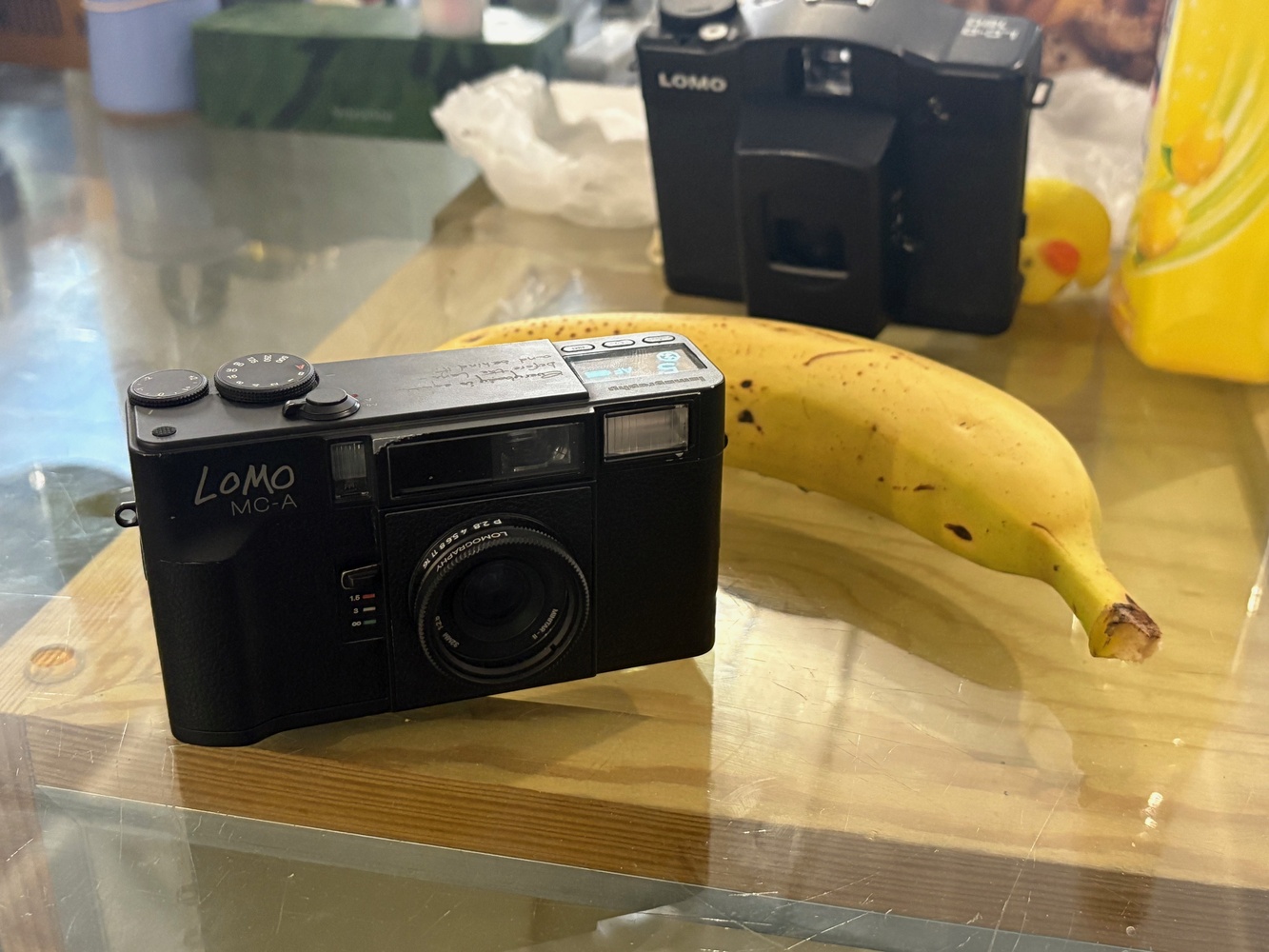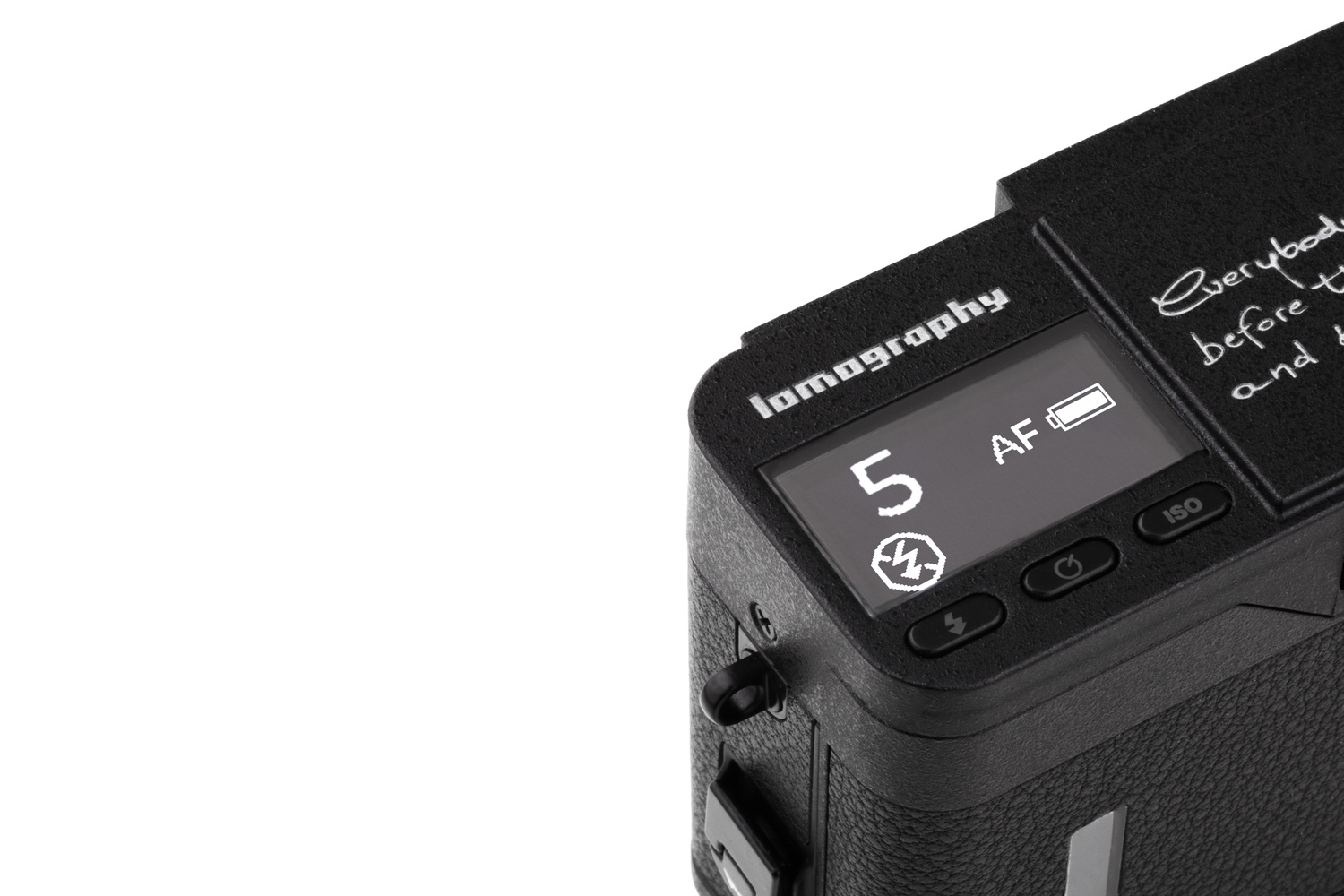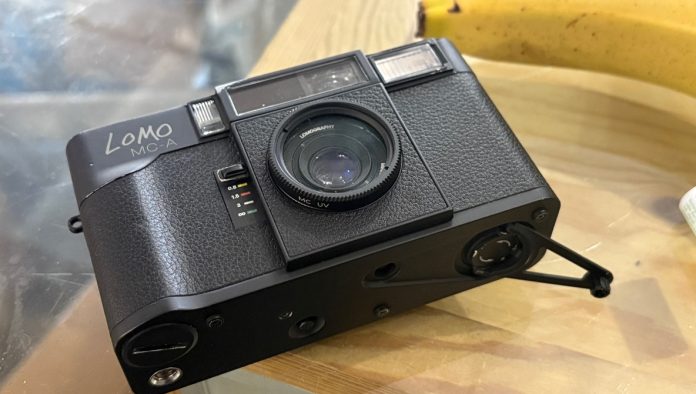Lomography recently announced its newest camera, the Lomo MC-A, and it raised a bit of a ruckus. It’s an entirely new point-and-shoot camera with some fascinating features and promising ideas. On Friday, I got the chance to handle one of the prototypes at the Lomography office in DUMBO (“Down Under the Manhattan Bridge Overpass” for non-New Yorkers), and I have to say, I really liked what I saw.
Before I get too deep into the weeds with my first impressions, a few notes. First, this was a non-production prototype, meaning there may be small changes here and there from what I handled. According to Lomography, “The CEOs and Co-Founders Sally and Matthias were at the helm of the ship in the design and testing of this camera. But the entire Lomography staff had a part to play in the camera getting made.”

So, with that out of the way, let’s get into it. First, let’s talk about the build: the body is made out of solid CNC’d metal and has a serious heft to it. It feels absolutely solid, similar to a lot of premium point-and-shoot bodies from the mid-1990s. Holding it in my hands, I was reminded of the Nikon 35Ti. The version I handled was solid black, with a nice leatherette trim. There’s also a chrome body being released, but they didn’t have one available at this time. Talking with the folks at Lomography, they’re considering other color/leather combinations in the future.

For now, it’ll be difficult to talk about the lens quality without seeing the frames I shot, but the sample images I was provided look very promising. Talking with the folks at Lomo, I’ve been told that while it shares a lot of similarities with the Minitar lens on the Lomo LC-A, it’s an entirely new design specific to this camera.

One interesting element is that both the winder and rewind functions are all manual. There’s a physical advance lever and rewind knob. This is something I actually appreciate, as older point-and-shoots age, the electronics are usually the first to go. Having manual options for winding and rewinding simplifies the camera and seems like one less thing to break.

Speaking of manual options, the camera features both autofocus and zone focusing options, as well as automatic, aperture priority, and fully manual shooting modes. There are also multiple flash options, including a rear-curtain flash option. But more interesting than that, there’s a PC-sync flash socket, giving you the opportunity to connect a wireless trigger or to connect directly to a larger flash. The camera comes with a rechargeable CR2 battery, but can operate with normal CR2s as well.

In the end, though, the final analysis can only be made by using it out in the field. How sharp is the lens? How accurate is the metering? How accurate is the autofocus? How does it hold up to everyday use and abuse? These questions can’t be answered just by handling it in the office, but I genuinely liked what I saw. The prototype was sturdy, the autofocus seemed snappy, and the test images Lomography provided suggest a fun little design with a lot of potential.
I’ve included a frame I shot with the prototype, as well as some courtesy images below. It’ll be interesting to see how it performs out in the wild.
According to Lomography, “The camera was released on October 22 and was on pre-sale for the first round, who got shipping for the 1st week of December. All MC-As ordered now will ship in the new year.”
My Test Image Shot on the Prototype

Sample Images Courtesy of Lomography



Lomo MC-A Key Features
- 32 mm f/2.8 multi-coated Lomo glass lens with autofocus
- Full frame 35 mm
- Automatic, aperture priority, or fully manual shooting modes
- Built-in flash with creative modes and colored filters
- Manual zone-focusing option from 0.4 m
- Shutter speeds from 1/500 s to bulb
- Exposure compensation control
- DX code reading or manual ISO settings
- Unlimited multiple exposures, bulb mode, and self-timer
- PC-sync flash socket
- Lomography’s signature tools: MC UV Glass Protective Lens Filter, Splitzer, Protective Camera Wrap, Colored Gel Flash Filters, Leather Hand Strap, and rechargeable CR2 battery included







